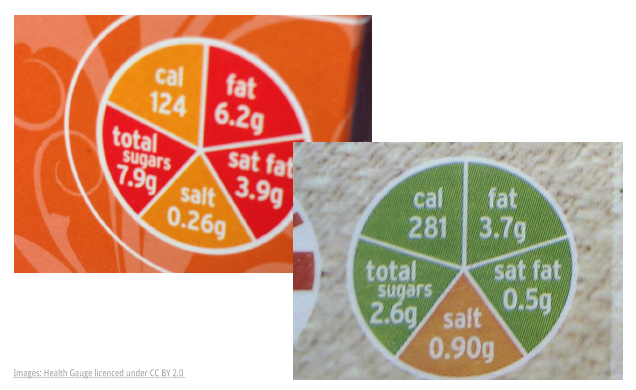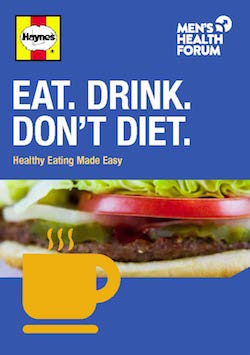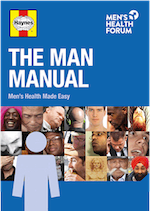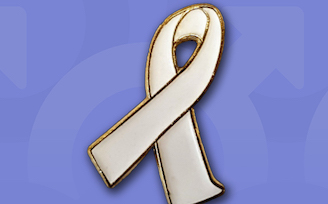How to read food labels

How do you read food labels?
With difficulty sometimes. But you can learn to speak the lingo.
Most pre-packed foods have a nutrition label on the packaging which tells you how much energy, protein, carbohydrate and fat they contain (per 100g and often per serving, too). They may also show information on saturated fat, sugars, sodium and salt. Avoid trans fats. They are listed as partially-hydrogenated fat or oil on the label.
Ingredients are listed in order of quantity.
If sugar is one of the first words on a list, it may contain more than is good for you. Similarly, if there’s a lot of E numbers and words that sound more like chemicals than foods, you may want to steer clear.
The Red, Amber and Green traffic-light flashes show how a particular food or drink fits into your daily diet.
In general, the more green on the label, the healthier it’s likely to be.
Red on the label means the product is high in saturated fat, salt or sugars and these are the foods most of us need to cut back on. So, if you pick up two similar products, the label should help you select the healthier option. That’s the theory, anyway.
What’s so bad about processed food?
With most foods, the less processed it, the better it is for us. You’re looking for the nearest to fresh you can find.
This is not always as obvious as it looks. Fish tinned at sea and veg frozen when picked may well have more nutrients than an ageing fish and veg meal packaged on the deli section to look nice and fresh.
Processed foods usually have higher levels of fat, sugar and/or salt than home-cooked versions and less of the important nutrients found in freshly-prepared foods. But eating them occasionally is fine. Check labels to avoid those with high contents of fat, sugar and/or salt.
To make home-cooked meals more convenient, batch cook and freeze extra portions for when time is tight. This means you get a home-cooked dinner quicker than a take-away, cheaper and with more of the good stuff.
Really easy: a massive soup. Braise chopped onion in a little oil for five minutes. Add water and your favourite veg chopped up. Simmer until soft and zap it with the blender. Cream it with soya milk. Flavour with spices and/or garlic. Lasts days. Plenty of recipes online.
Home-made is best as shop-bought soups are often high in salt and sugar.
What about the labels on snacks?
A snack is likely to represent a healthy option if, per 100g, it contains: less than 3g fat, less than 2g sugar and less than 0.25g salt (or less than 0.1g sodium)
A snack is best avoided if, per 100g, it contains: 20g or more fat, 10g or more sugar or 1.25g or more salt
For snacks with values in-between, handle with care.
We don't currently post comments online but are always keen to hear your feedback.
| This content is wholly based on the Men's Health Forum's man manual Eat. Drink. Don't Diet. which was prepared in line with the NHS England Information Standard of which the MHF is a member. Follow the links for more information or to buy copies. |
Date published
18/06/15
Date of last review
28/02/15
Date of next review
28/02/18
|
The Men’s Health Forum need your support It’s tough for men to ask for help but if you don’t ask when you need it, things generally only get worse. So we’re asking. In the UK, one man in five dies before the age of 65. If we had health policies and services that better reflected the needs of the whole population, it might not be like that. But it is. Policies and services and indeed men have been like this for a long time and they don’t change overnight just because we want them to. It’s true that the UK’s men don’t have it bad compared to some other groups. We’re not asking you to ‘feel sorry’ for men or put them first. We’re talking here about something more complicated, something that falls outside the traditional charity fund-raising model of ‘doing something for those less fortunate than ourselves’. That model raises money but it seldom changes much. We’re talking about changing the way we look at the world. There is nothing inevitable about premature male death. Services accessible to all, a population better informed. These would benefit everyone - rich and poor, young and old, male and female - and that’s what we’re campaigning for. We’re not asking you to look at images of pity, we’re just asking you to look around at the society you live in, at the men you know and at the families with sons, fathers and grandads missing. Here’s our fund-raising page - please chip in if you can. |



